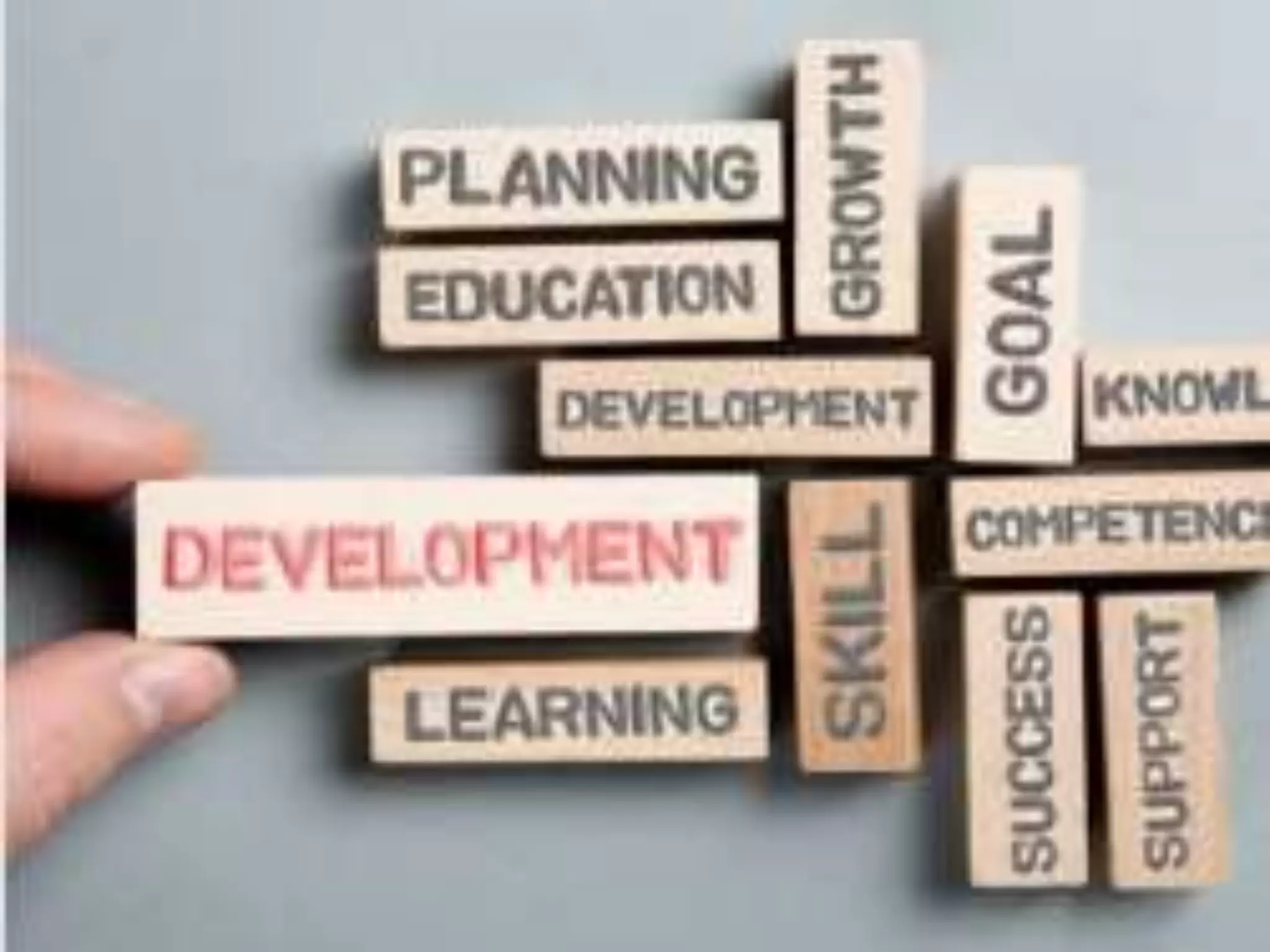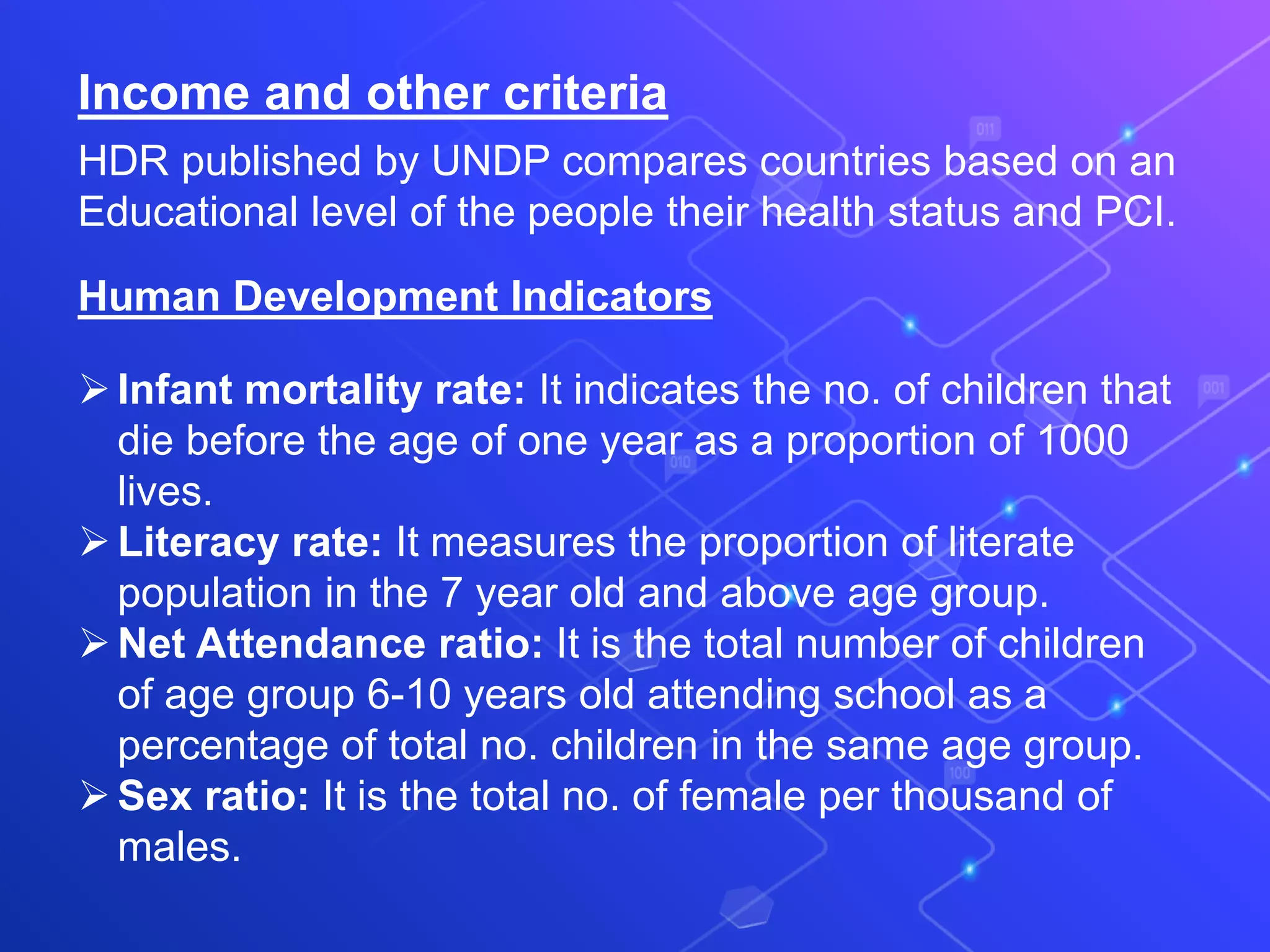The document discusses the concept of development, emphasizing that different individuals may have varying and sometimes conflicting developmental goals that encompass not only income but also aspects such as health, education, and equality. It outlines methods for measuring national development, highlighting indicators like per capita income, life expectancy, and literacy rates, alongside metrics such as GDP and GNI. Additionally, it introduces the concept of sustainable development, which aims to balance resource management with long-term wealth and well-being.










